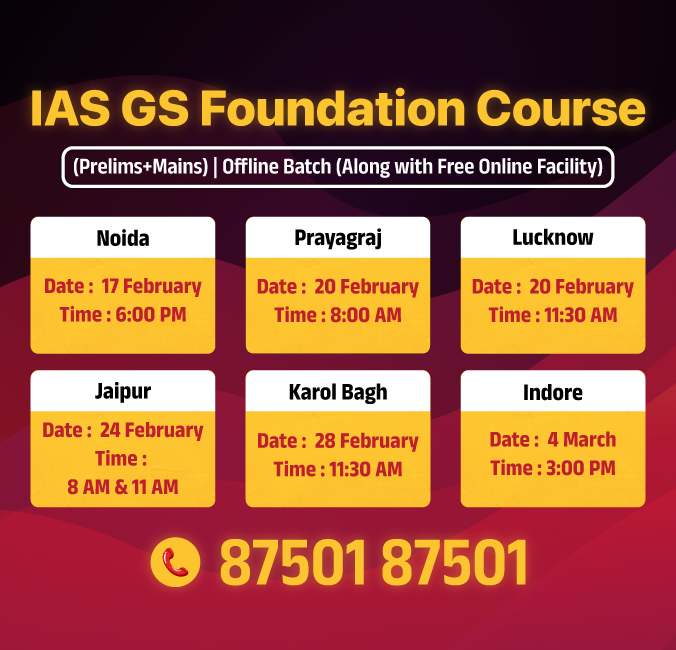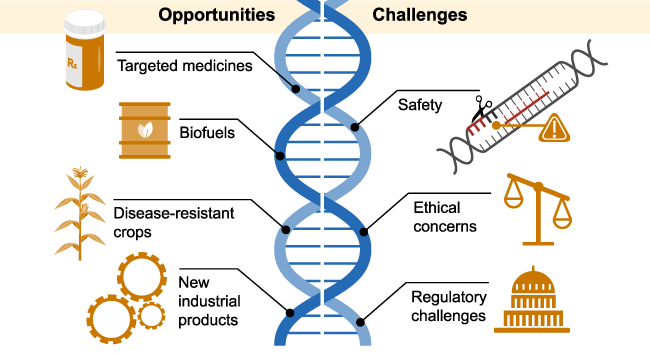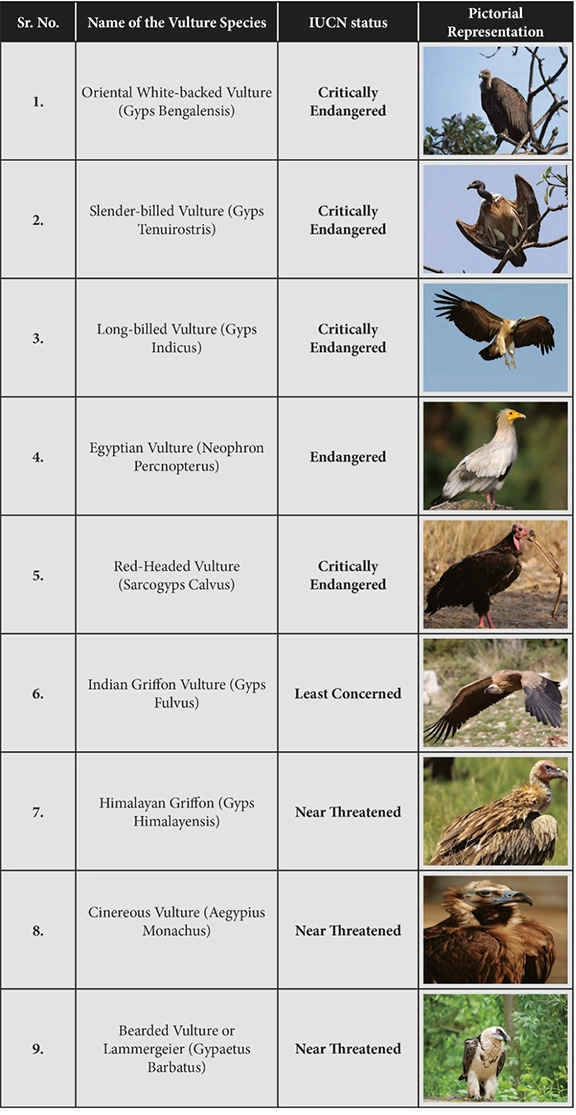Haryana Switch to Hindi
Genome-Editing Lab in Haryana
Why in News?
The Union Minister for Agriculture and Farmers’ Welfare inaugurated a genome-editing laboratory at the Indian Council of Agricultural Research (ICAR)-Indian Institute of Wheat and Barley Research (IIWBR), Haryana.
- Funded under an ICAR scheme, the laboratory aims to leverage modern genomic tools to enhance desirable traits for improved crop adaptation and enriched grain quality.
Key Points
- Appreciation for Climate-Resilient Varieties:
- Farmers appreciated the scientists for providing climate-resilient wheat varieties that could tolerate day-time temperature fluctuations, especially in February and March.
- These climate resilient wheat varieties include Karan Vandana (DBW-187), MACS 6478, and Pusa Yashasvi.
- They expressed satisfaction with the reduced input costs, as disease-resistant varieties eliminated the need for fungicide sprays.
- Farmers appreciated the scientists for providing climate-resilient wheat varieties that could tolerate day-time temperature fluctuations, especially in February and March.
- Interest in New Barley Varieties:
- Some farmers showed interest in hull-less barley varieties, particularly DWRB 223, which had been recently released.
- DWRB-223 offers a high yield of 42.9 quintals/ha and 11.7% protein.
- Its husk-free grain makes it ideal for direct consumption and health food applications.
- Some farmers showed interest in hull-less barley varieties, particularly DWRB 223, which had been recently released.
- Emphasis on Lab-to-Land Approach:
- The Minister emphasised the importance of connecting scientific research with grassroots farming through the ‘lab to land’ approach.
- He stressed that agricultural innovations from laboratories must reach farmers to ensure real-world impact and adoption.
Genome Editing
- Genome editing (also called gene editing) is a group of technologies that give scientists the ability to change an organism's Deoxy-Ribonucleic Acid (DNA).
- These technologies allow genetic material to be added, removed, or altered at particular locations in the genome.
- Advanced research has allowed scientists to develop the highly effective Clustered Regularly Interspaced Palindromic Repeat (CRISPR) -associated proteins based systems. This system allows for targeted intervention at the genome sequence.
- This tool has opened up various possibilities in plant breeding. Using this tool, agricultural scientists can now edit the genome to insert specific traits in the gene sequence.
Indian Institute of Wheat and Barley Research (IIWBR)
- About:
- IIWBR was established in 2014, following the upgradation of the Directorate of Wheat Research.
- It is a premier ICAR-affiliated institute located in Karnal, Haryana.
- It serves as a national hub for research and development in wheat and barley.
- Core Focus:
- IIWBR concentrates on enhancing the productivity of wheat and barley through scientific innovation and field-level interventions.
- The institute aims to make India a global leader in wheat production while ensuring national food security.
- Major Activities:
- It coordinates the All India Coordinated Research Project on Wheat and Barley (AICRP).
- Its key activities include:
- Varietal improvement through breeding and genetics.
- Resource management to enhance efficiency and sustainability.
- Crop protection strategies to combat diseases and pests.


Haryana Switch to Hindi
Jatayu Conservation Breeding Centre (JCBC)
Why in News?
On World Earth Day, authorities gave a major push to vulture conservation by successfully relocating 34 critically endangered vultures (20 long-billed and 14 white-rumped) from Jatayu Conservation Breeding Centre (JCBC) in Pinjore (Haryana) to Maharashtra.
Key Points
- Sites for Wild Reintroduction:
- The vultures will be reintroduced into the wild across three major tiger reserves in Maharashtra:
- Role of BNHS and Collaboration:
- The Bombay Natural History Society (BNHS) coordinated the transfer in collaboration with forest departments of Haryana and Maharashtra.
- The BNHS, a pan-India wildlife research organization, has been promoting the cause of nature conservation since 1883.
- Its mission is conservation of nature, primarily biological diversity through action based on research, education and public awareness.
- Its vision is to be an independent scientific organization with a broad based constituency, excelling in the conservation of threatened species and habitats.
- The Bombay Natural History Society (BNHS) coordinated the transfer in collaboration with forest departments of Haryana and Maharashtra.
- National Network of Conservation Breeding Centres:
- The BNHS has established four Jatayu Conservation Breeding Centres across India:
- Pinjore (Haryana)
- Bhopal (Madhya Pradesh)
- Rajabhatkhawa (West Bengal)
- Rani, Guwahati (Assam)
- The BNHS has established four Jatayu Conservation Breeding Centres across India:
World Earth Day
- It is celebrated every year on 22nd April with the mission of broadening, educating, and activating environmental movements worldwide.
- Theme for 2025: "Our Power, Our Planet”- It calls on everyone to unite for renewable energy and to work toward tripling clean energy capacity by 2030.
- The first Earth Day was observed in 1970 after Senator Gaylord Nelson witnessed the catastrophic effects of an oil spill in California.
- This pivotal day led to the passing of significant environmental legislation in the US, including the creation of the Environmental Protection Agency (EPA).
- In 1990, Earth Day became a global event with 200 million people and 141 countries participating.
- Significance: It also offers an opportunity to celebrate green initiatives around the world and highlight ongoing efforts toward environmental protection.
Jatayu Conservation Breeding Centre
- About:
- It is a joint project of the Haryana Forest Department and the Bombay Natural History Society (BNHS).
- It aims to save three critically endangered vulture species—White-backed, Long-billed, and Slender-billed.
- The centre was initially established as the Vulture Care Centre (VCC) in September 2001.
- The VCC was upgraded to VCBC (later Jatayu Conservation Breeding Centre - JCBC).
- Strategic Location:
- The JCBC is located at village Jodhpur, near Bir Shikargaha Wildlife Sanctuary, about 8 km from Pinjore, Haryana.
- It spans 5 acres of land provided by the Haryana Forest Department.
- JCBC currently houses 160 vultures, including:
- It is the largest collection of these three Gyps species in one location globally.










%20MPPCS%202025%20Desktop%20E.jpg)
%20MPPCS%202025%20Mobile%20E%20(1).jpg)










.png)
.png)











 PCS Parikshan
PCS Parikshan



